Following on from our Pudsey Pubs blog series, Part 2 of this blog features the fascinating Pubs that are now only a memory. Some have called time recently, others have almost slipped out of mind. There are a lot of pubs here still fondly remembered and sadly missed by those that knew them best. We used to be spoilt for choice with our lively pub culture, so it’s important to support what we still have left to enjoy.
(Note relating to licensed premises operating as Pubs (not Bars or Clubs) in Pudsey).
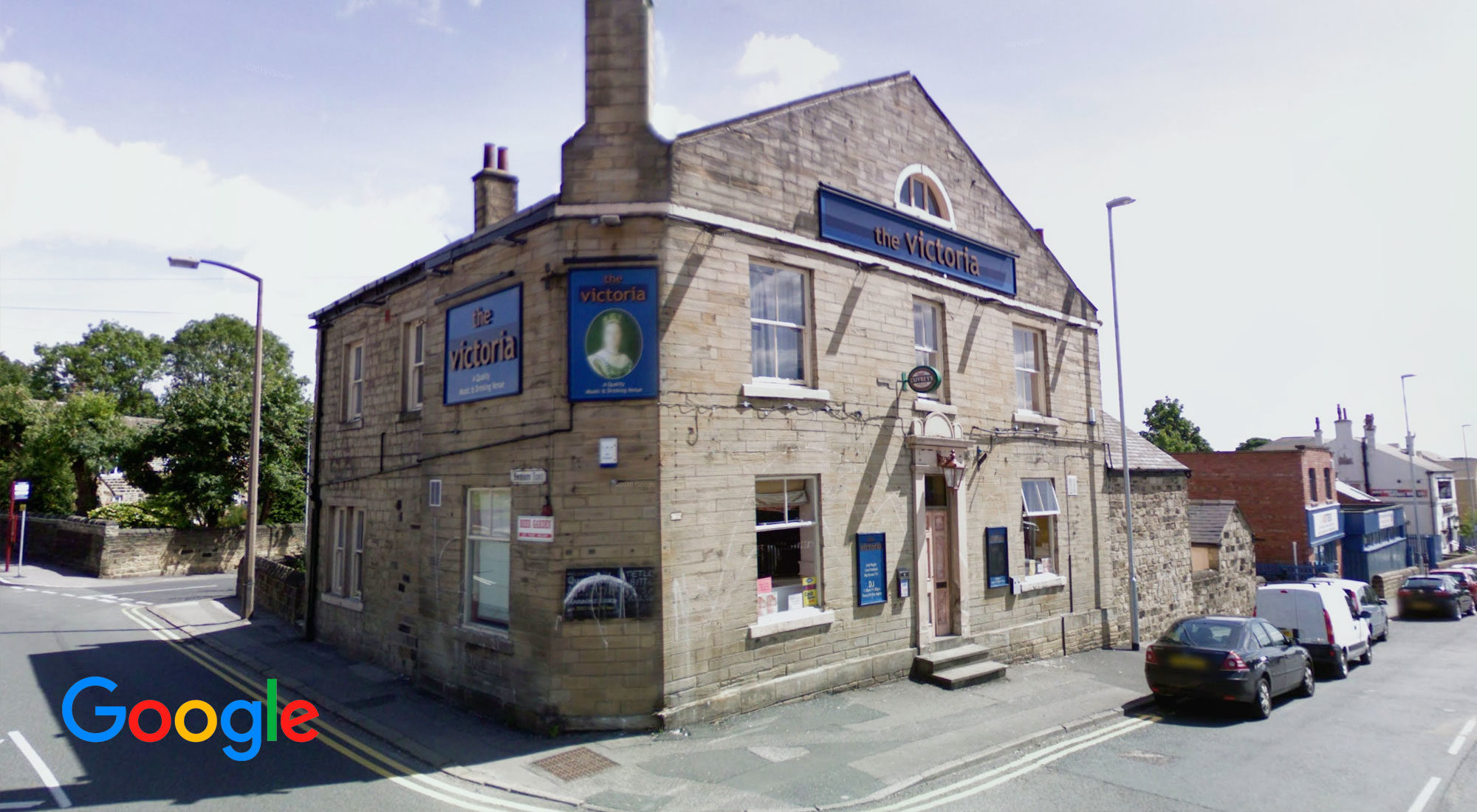
The Victoria Inn
The Victoria Inn was situated on Swinnow Road at the bottom of Lowtown, and was a short stroll between its neighbours the Britannia and The White Horse. Built and owned by the Musgrave family in 1837 and named to celebrate the coronation in 1838. The Vic stayed in the Musgrave family up until 1891 when it becomes Pudsey’s first Tetley’s Inn, refurbished with the classic dark green tiles.
The Vic was host to one of the earliest recorded Pub Cricket teams from Pudsey; their team playing in the old 7 a side / two innings format in 1838. In the modern era the Vic had its own Rugby League team – the Vikings who played in the Pennine League.
The Victoria finally called time in 2014 and is now apartments
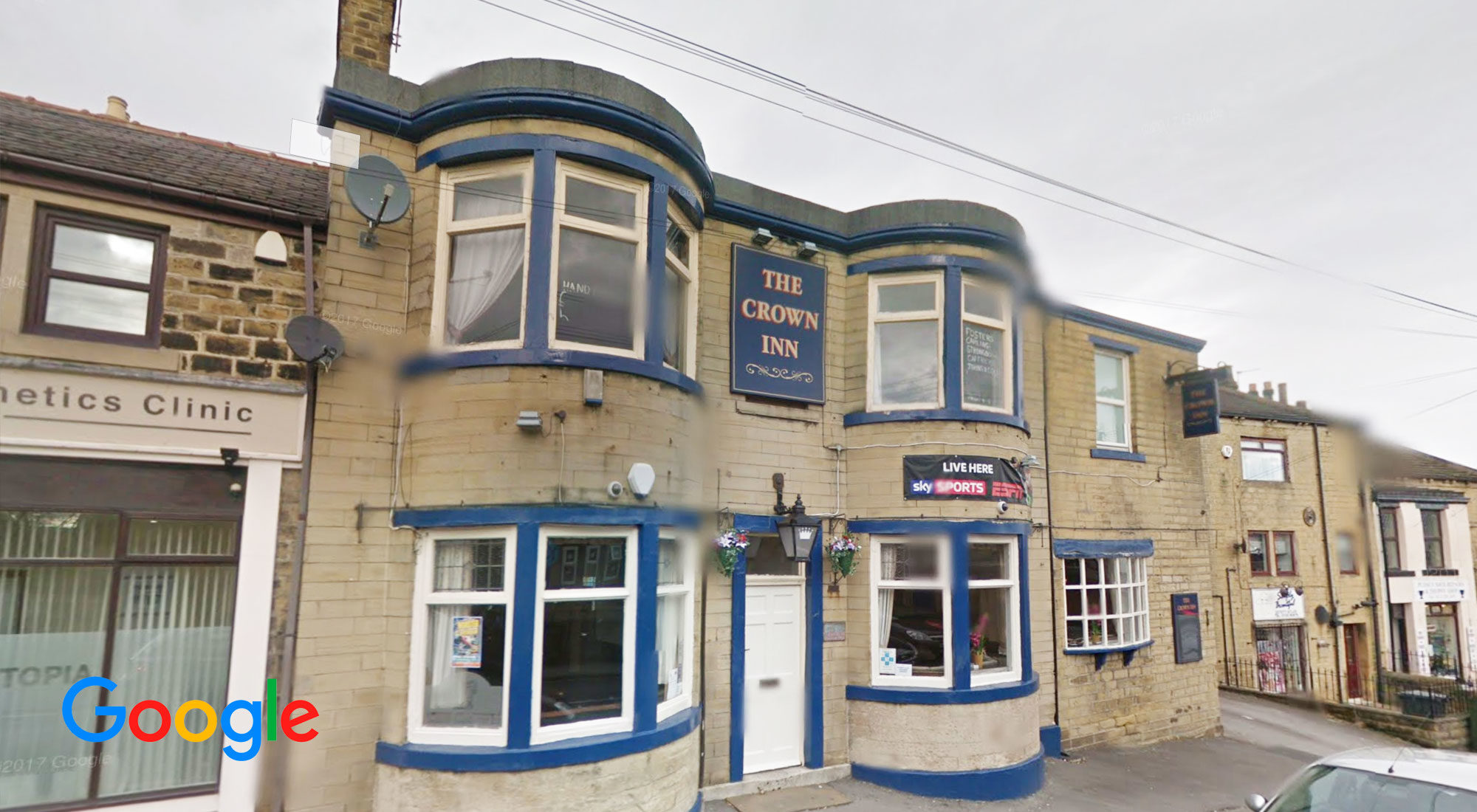
The Crown
The Crown dates from around 1780 and was built by local maltser William Farrer and was known first as the Shoulder of Mutton. However William became bankrupt, and ownership of the property and its boundary fell into dispute. A stone marker on the site was carved with: “This is a mean Gable End betwixt Thomas Wood and Daniel Moor, AD 1810”. Daniel Moor was a local butcher and also held the licence for the inn. After Daniels death in 1829, the inn was sold to Samuel Myers for the tidy sum of £800. Samuel was responsible for rebuilding the Inn to the shape we can still see surviving today including the bow windows. Lastly Samuel changed the name to “The Crown”.
The opening of Lowtown Station across the road in 1878 benefitted the Crown greatly increasing its footfall and its popularity at the heart of the bustling Lowtown district.
The Crown served as a venue for the Britannia Cricket Club for many years, despite having the Britannia pub next door to their cricket pitch. The Crown hosted a meeting to discuss the amalgamation between the Britannia and St Lawrence clubs in 1891. An idea that seems strange now given the century and a half of rivalry, however at the time the idea had a lot of support, luckily for the Town’s history the idea was dropped at silly mid-off. In 1895 the Crown hosted a party to celebrate local cricket hero John Tunnicliffe. John was presented with a gold watch to celebrate his 1000 runs in a season for Yorkshire and he went on to play until 1907.
The Crown also had its own bowling green at the back, it was oblong in shape to fit within Daniel Moor’s old boundary and was home to the Lowtown Bowling Club (bowls being Pudsey’s second sport after cricket).
Sadly towards the end of its lifetime, trade in the Crown slowly dropped off and the site sold to property developers. The building has had a sympathetic conversion into apartments, its old pub sign now rests in the garden of the fishing lake behind Henry Kranks.
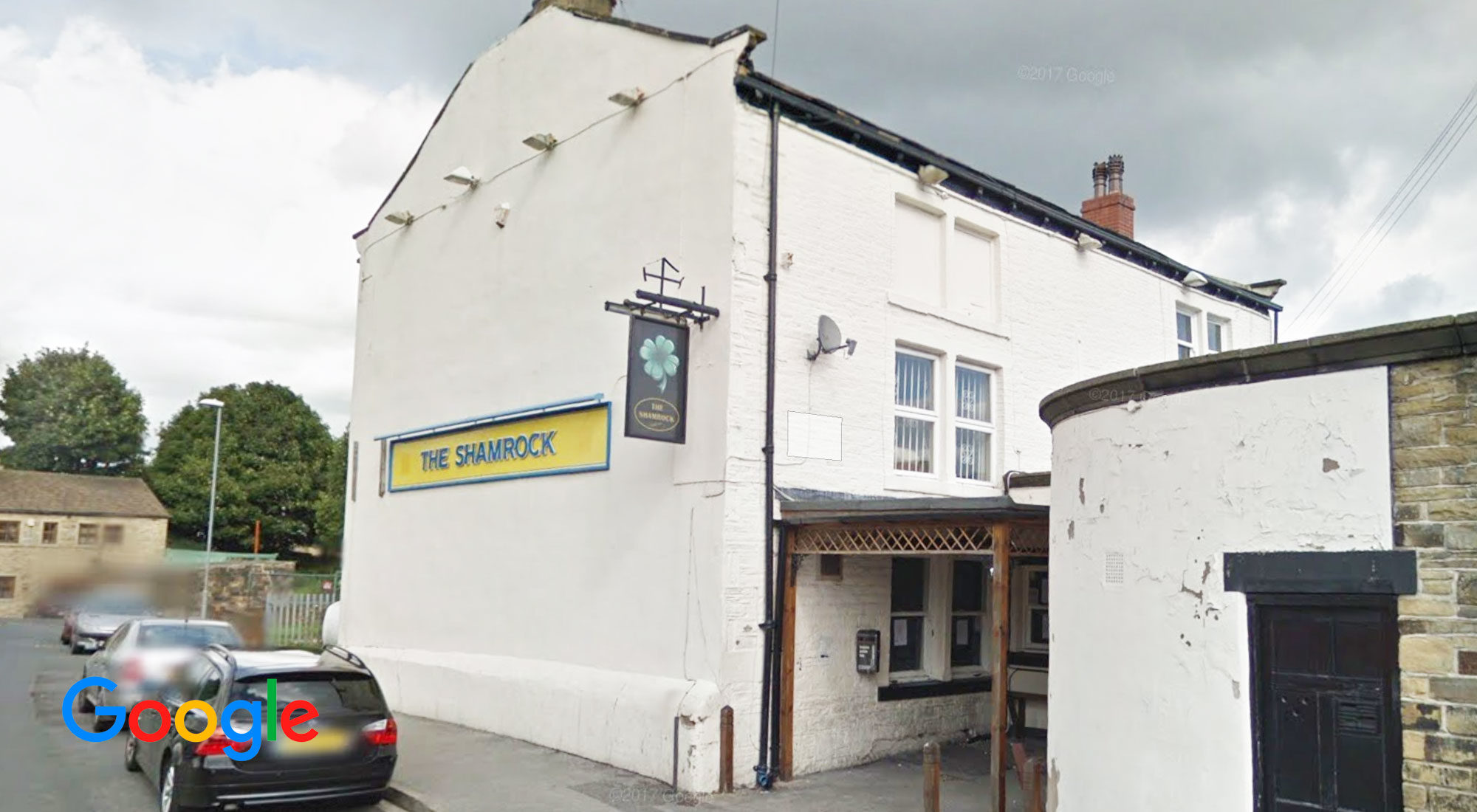
The Shamrock
Once a bustling lively pub on Clifton Hill which used to be the start point for many a Friday nights revelry across the town, now also closed and converted to apartments.
This though is a bit of a step down for a building that sat like an island in a sea of constant change and development: The name Shamrock hints at its origins from the Irish slums of Delph Hill, but the buildings beginnings go back even further – it has a datestone of 1777 and is typical of the large Pudsey 3 storey garret houses of the time. It would have been used in the woollen textile industry with the handlooms and on the upper floor.
For 30 years that floor was also used as the Wesleyan Methodist Sunday School until they moved to a purpose built school on the Claremonts.
Around this time there was an influx of Irish families fleeing famine and terrible hardships and many of them settled on Delph Hill (now around Clifton Hill/Clifton Rd/Mount Pleasant). Delph Hill itself only now exists as a small alleyway leading to Lowtown, but back in its heyday the larger district was packed with people living in a jumble of poor quality, quickly built housing and workshops.
It’s about this time we know that the Shamrock starts its new life as a pub and music venue. Running a respectable establishment in that environment must have been a challenge; adverts for its music nights state “No disorderly boys allowed” and prizes for “the best singer of any kind free from vulgarity”. Their entertainment nights were a great success though and featured guest comedians, clog dancing competitions and the “Free and Easy” which was an early version of open mic nights.
Despite this labourer John Sharp was sentenced to a year in prison for drunken and riotous behaviour after his arrest at the Shamrock. This was a proper ‘Irish Pub’ in every sense long before it became a trendy theme.
The last we saw of the Shamrock it was bedecked in Leeds United livery and once had big Jack Charlton on its pub sign, before it closed its doors for the last time.
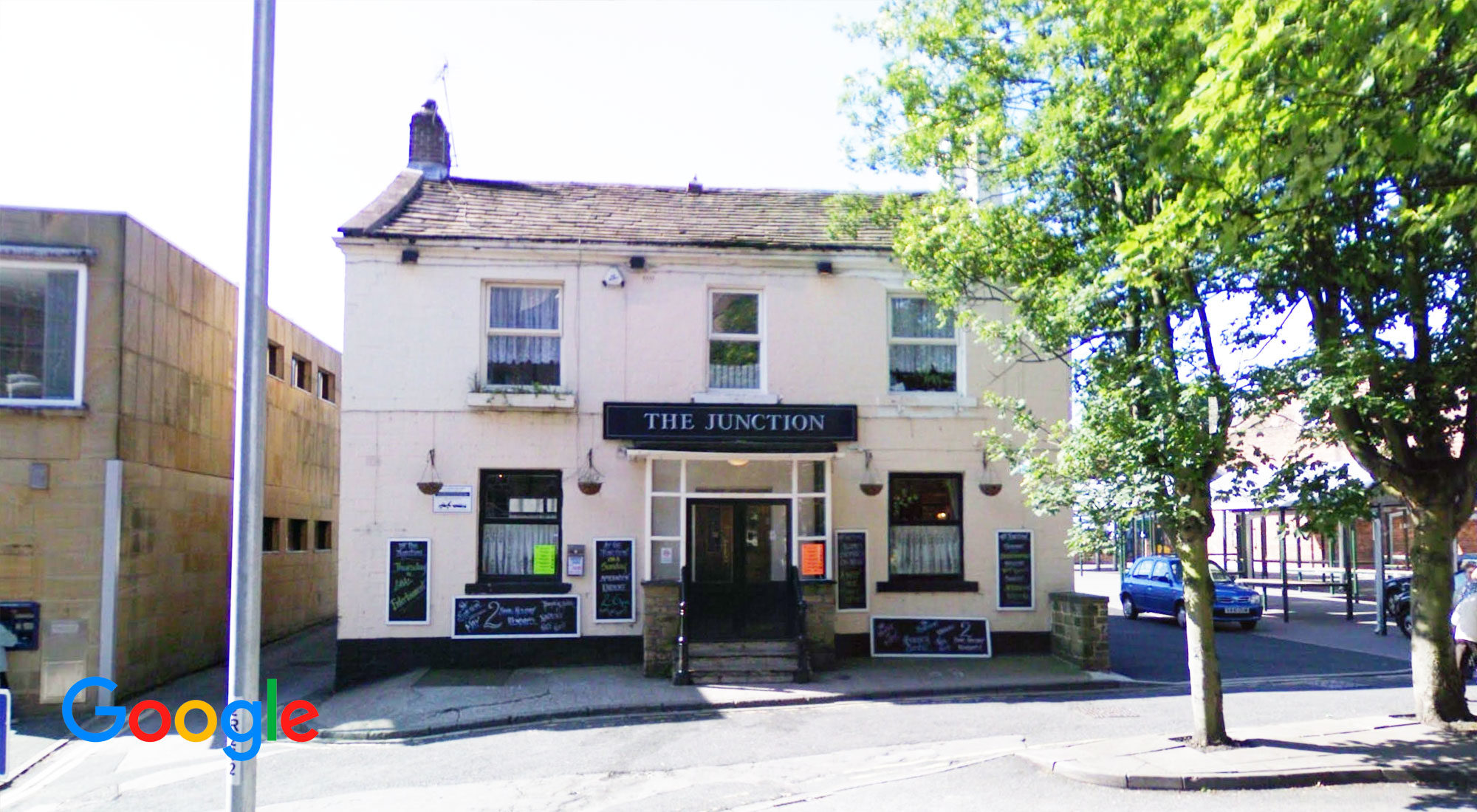
The Junction
Fondly remembered and sadly missed, it could get very busy on a Friday night. The Junction sat on the corner of the market place close to the main cross roads. Back in the day this was Waver Green where cattle drovers rested and local business was conducted at the Manor Hall.
Waver Green itself looked very different when the Junction was built in 1838. The Midland Bank building didn’t exist yet, instead there was a small group of huts on the site that comprised the old market place. Our modern day market site had a group of cottages huddled in it, the space where the bus station/playground/leisure centre is now, was a recreation ground known as the “Rec”. The Rec hosted Feasts and large events, and also the much travelled Britannia Cricket Club. The Britannia using the Junction pub as one of their many club houses.
With the Town Hall across the road, the Borough Council used to have their post meeting refreshments in the local pubs – the Conservative and Liberal members adjourning to the Black Bull, and the Labour members to the Junction. Often there would still be issues that needed resolving and the two parties would send a runner between the pubs to keep the debate going!
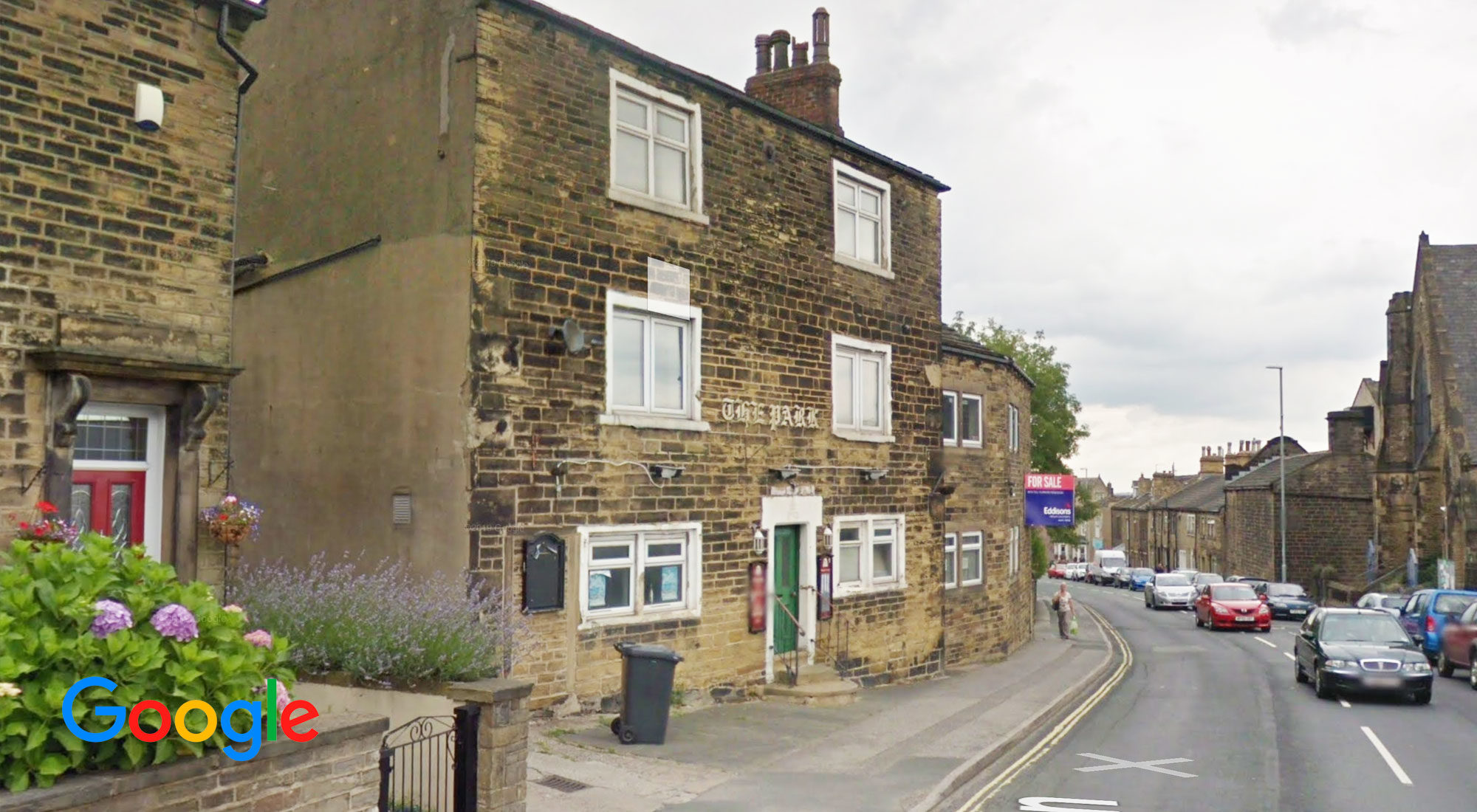
The Park Hotel
“The Park” was originally a farmhouse on Church Lane dating to 1734 and belonging to Ben Farrer.
This is another of our buildings with a date stone over the door, and also another listed 3 storey garret house. Taken over by the Northrop family and converted into “The New Inn”, it was renamed the Park Hotel in 1886 to reflect the opening of Pudsey Park across the street.
Also across the street and sold to the local Board to form the basis of that new park had been the original St Lawrence Cricket Club pitch and pavilion. Not surprisingly the “The New Inn” had been home base for St Lawrence up until their new home at Tofts Road was built.
Local too was the old Police station at Lower Tofts Road – during the 60s it was a challenge to get served in The Park if you looked a bit young as it was also frequented by the Old Bill.
Generous in size due to several additional extensions, The Park boasted a fine lounge and bar area with plenty of space left over for the darts board and oche. Always a welcome stop over between the pubs in the Centre and Chapeltown, we bade farewell to The Park in 2008.
Find out more in the 2nd part
Part 2 of Pudsey’s Lost Pubs lands next week! Keep your eye on our website and Facebook page for updates.
Recommended reading:
Information sources: – all in association with Pudsey & District Civic Society
‘Pudsey’s Pubs’ – by Ruth Strong (2002) Pudsey & District Civic Society
More information and local history publications available at http://www.panddcs.com/
About the author
I’ve been an exec member of Pudsey & District Civic Society since 2014, also founder of
The Friends of Pudsey Cemetery & Chapel and the research project www.pudseycenotaph.co.uk.
Please support the Civic Society to help preserve and build our amazing heritage: info@panddcs.com